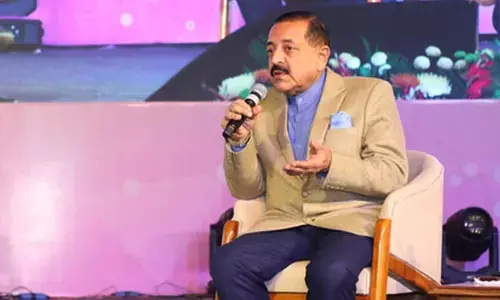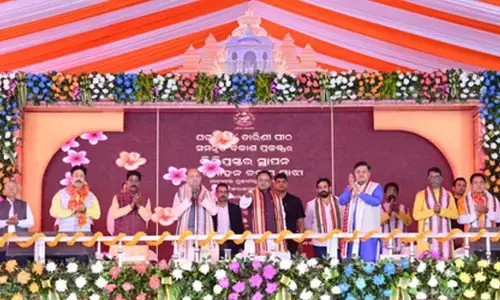Declining Farmer population threatens food security of India

Declining Farmer Population Threatens Food Security of India. The trends in population growth of our country for the past century reveals that the country’s population was 27.13 crore in the year 1900, it decreased to 26.31 crore in 1925 and increased to 35.04 crore in 1950 and 36.23 in 1951. Since then the population growth took exponential proportions of growth to 43.88 crore in 1961, 54.79 crore in 1971, 68.52 crore in 1981, 84.39 in 1991 and 102.70 crore in 2001 and currently it is staggered to over 131 crores.
The trends in population growth of our country for the past century reveals that the country’s population was 27.13 crore in the year 1900, it decreased to 26.31 crore in 1925 and increased to 35.04 crore in 1950 and 36.23 in 1951. Since then the population growth took exponential proportions of growth to 43.88 crore in 1961, 54.79 crore in 1971, 68.52 crore in 1981, 84.39 in 1991 and 102.70 crore in 2001 and currently it is staggered to over 131 crores.
It is well known that for the last thirty years population depending on agriculture directly or indirectly remained constant but according to Census 2011 farmer population is declining. As per latest census, there are now 95.8 million cultivators for whom farming is their main occupation and this is nearly 15 million farmers (‘Main’ cultivators) less than there were in 1991 and over 9 million less since 2001.
.jpg) The trend shows that about 2,035 farmers are losing ‘Main Cultivator’ status every single day for the last 20 years. These people have few places to go beyond the lowest, menial ends of the service sector. This pathetic situation is forcing once proud farmers to opt even for security guard jobs in towns and cities.
The trend shows that about 2,035 farmers are losing ‘Main Cultivator’ status every single day for the last 20 years. These people have few places to go beyond the lowest, menial ends of the service sector. This pathetic situation is forcing once proud farmers to opt even for security guard jobs in towns and cities.
It was nearly four decades ago in 1971 the country has seen a similar drastic fall in number of farmers. However, between 1981 and 1991, the number of cultivators (main workers), actually went up from 92 million to 110 million. So the huge decline comes post 1991 with WTO and the liberalization process.
As in previous decades, the proportion of agricultural labour has increased, and there are now 144 million agricultural labourers, 30% of the total worker population against 26.5% in 2001. The rise in agricultural labour could be explained by the falling size of land holdings over time. Over two hundred and sixty three million workers are found to belong to the agricultural sector thus making up half of the total number of workers, while a decade ago it was two hundred and thirty four million. This shows an absolute increase in number in spite of a decline in percentage.
Farming has been a disaster world over particularly for last 30 years. Except old farmers nobody is entering farming. The average age of farmers in America is 58 because it’s been such a horrible business. The average age of farmers in Korea is 65 and Japan is 66. In Australia, it’s 58. Over quarter million farmers have ended their lives since 1997. Even in UK, the highest rate of suicide is in agriculture. In India people already engaged in farming are quitting and young people are not interested to come to farming.
The reason many people are not entering into agriculture is that farmers are not making enough money. No wonder people are so averse to getting into farming. It's plain old economics that people will go where they see high returns. Putting it the other way round, people will enter farming when they see the scope for higher returns.
This means that prices of agricultural commodities have to go up substantially. This would effectively cause food costs to shoot up. In India, we have already seen how increasing food prices have caused inflationary pressures over the last few years. Given the structural problems in the global farming industry, we believe the food crisis could get worse in the coming years.
It isn’t aberrant weather, uneconomical farm prices and the increasing corporatization of agriculture that alone is responsible for the prevailing agrarian distress. The unavailability of farm labour at the peak and crucial time of crop harvesting and sowing is one of the prime reasons for farmers quitting agriculture.
Farm labour and increasing numbers of small and marginal farmers are interested in seeking employment guarantee scheme for their livelihood because at least assured income is available to them. No wonder, an estimated two third of MNREGA workers are actually land owners.
According to the National Sample Survey Organization (NSSO), the average monthly income of a farming family in 2003-04, which includes five family members plus two head of cattle, was at a paltry Rs. 2,115. The NSSO has since stopped measuring farm income.
Information on the situation of farmers in the country will be collected as part of the 70th round of the National Sample Survey, to be conducted by the National Sample Survey Organization (NSSO) from January 2013. “The 70th round of National Sample Survey starting from January 2013 that will continue for the entire year will study the situation of farmers, their indebtedness and landholding positions.
It is astonishing to know that it is the agribusiness industry who gains by keeping rural workers away from agriculture. Shortage of farm labour has already led to the creation of a National Mission on Farm Mechanization which suggested increased mechanization as the way to overcome the crisis in farm labour. In the absence of manual weeding, it is time to promote herbicides as the solution.
It is therefore a windfall for farm implement manufacturers as well as suppliers of pesticides, including herbicides. The more the sale of chemical inputs and farm machines, the more will be the revenue to exchequer. No wonder, the Planning Commission is not in favour of letting farm workers remain on the farm. Under the 6th Pay Commission, a peon (chaprasi) in government service gets a minimum monthly salary of Rs. 15,000. A farming family earns less than Rs. 2,115 (in terms of prevalent prices, it would be around Rs. 2,400 a month). It is a shame that the nation even cannot think of providing farmers with an income that equals to a peon.
Six out of ten jobs in rural areas are now in the non-farm sectors which offer significantly higher wages than farm labor and this is the reason for shortage of labor in agriculture. Considering that two-third of the MNREGS work force comprises small and marginal farmers, and knowing that more than 42 per cent farmers want to quit agriculture if given an alternative, agriculture cannot be allowed to suffer any more blows.
Annually about Rs 40,000 crores are spent without concomitant production and run the risk of inflation. One of the fallouts of this program is that farm labourers have vanished from the farms and implicitly made farming uneconomical. It is time that MNREGS should be linked directly and only to agriculture by way of subsiding farm wages.
This will possibly revive the ailing farm sector and encourage rural youth to take up farming. Already some studies have pointed to the frightening scenario of the country turning into a major food importer before the end of the decade. Some 45 years after the launch of Green Revolution, India is once again poised to return back to the days of “ship-to-mouth’ existence.
Finally farm incomes continue to dwindle and younger generation is refusing to take up farming as a profession. Some may advocate simply transitioning as many people as possible out of agriculture is good but this should be done after achieving increased agricultural productivity or else it would leave country very dependent on food imports.
The declining farmer population is a bit frightening in that if young people do not come for farming that paves entry for big corporations to enter in to farming and threaten livelihood of farm labor and increase food prices. This may result in a very big food crisis and jeopardize food security of the country.
In any event, it’s alarming to learn that there are, and will be, less and less farmers over the coming years, in a world of fast growing population. The need of the hour is to motivate young population to enter in to agriculture because the tendency among youth is to move away from agriculture which may threaten food security of the country.

















